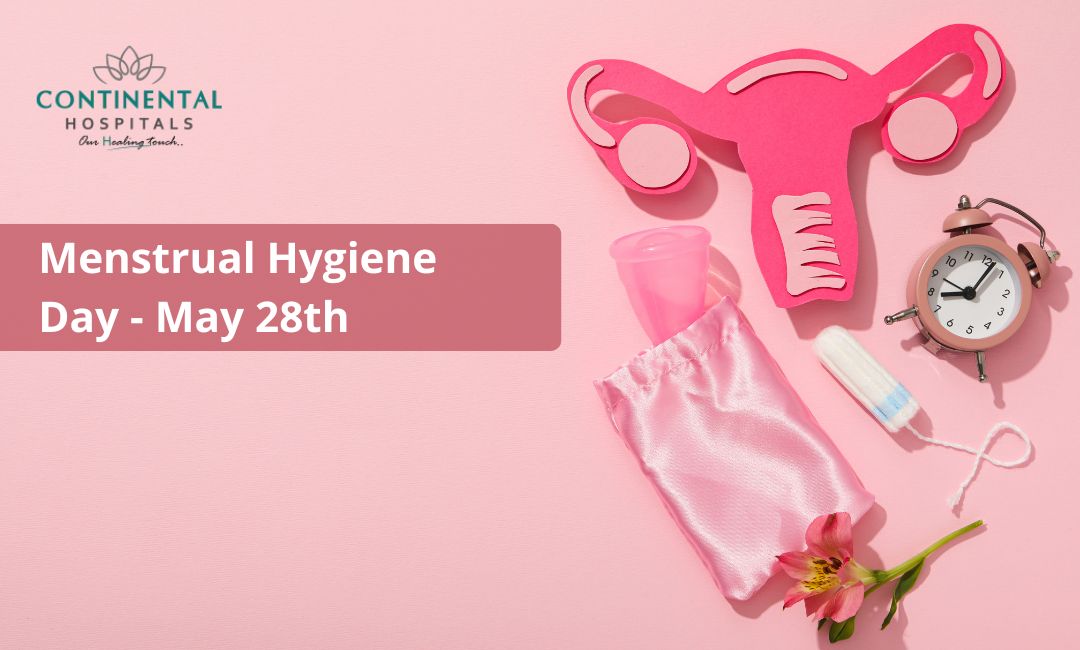Menstrual Hygiene Day, observed on May 28th annually, serves as a global platform to break the silence surrounding menstruation, raise awareness about menstrual hygiene management, and advocate for the rights of menstruating individuals worldwide. In this blog post, we'll delve into the significance of Menstrual Hygiene Day, explore the challenges faced by menstruating individuals, discuss the importance of proper menstrual hygiene practices, and highlight the initiatives driving positive change in this crucial aspect of women's health.
Understanding Menstrual Hygiene:
Menstruation is a natural biological process experienced by millions of people worldwide. Yet, across cultures, menstruation is often shrouded in stigma, shame, and misinformation. Many societies perpetuate myths and taboos surrounding menstruation, leading to discrimination, exclusion, and even health risks for menstruating individuals.
One of the primary objectives of Menstrual Hygiene Day is to challenge these taboos and foster open conversations about menstruation. By promoting education and awareness, we can dispel myths, debunk misconceptions, and create a supportive environment where menstruating individuals can manage their periods with dignity and confidence.
Importance of Menstrual Hygiene Day
Menstrual Hygiene Day is a global advocacy platform that brings together governments, NGOs, individuals, and civil society organizations to raise awareness about the challenges faced by menstruators worldwide. It was established in 2014 by German aid organization WASH United and aims to achieve:
Increased awareness: Empowering individuals with accurate information about menstruation and dispelling myths and misconceptions.
Improved access to menstrual hygiene products: Ensuring everyone has access to safe, affordable, and culturally appropriate sanitary pads, tampons, or menstrual cups.
Focus on menstrual health management: Promoting proper hygiene practices during menstruation and creating supportive environments, particularly in schools and workplaces.
Breaking the silence: Encouraging open conversations about periods to normalize menstruation and challenge societal taboos.
Challenges Faced by Menstruating Individuals:
Despite progress in recent years, menstruating individuals continue to face numerous challenges related to menstrual hygiene. Inadequate access to menstrual products, lack of sanitation facilities, and limited education about menstrual health contribute to a host of issues, including:
Period Poverty: Millions of people worldwide cannot afford basic menstrual products, forcing them to resort to unhygienic alternatives like rags, newspapers, or even leaves. Period poverty perpetuates cycles of poverty and inequality, hindering educational opportunities and economic empowerment.
Stigma and Shame: Cultural taboos surrounding menstruation can lead to feelings of shame and embarrassment, preventing individuals from seeking proper menstrual hygiene products and information. Stigma also contributes to social exclusion and discrimination, impacting menstruating individuals' mental and emotional well-being.
Lack of Access to Sanitation Facilities: In many parts of the world, inadequate sanitation facilities, including clean toilets and handwashing facilities, pose significant challenges for menstruating individuals. Without access to private and hygienic spaces to manage their periods, menstruators may face discomfort, health risks, and disruptions to their daily lives.
Health Risks: Poor menstrual hygiene practices can increase the risk of reproductive tract infections, including bacterial vaginosis and urinary tract infections. Additionally, prolonged use of unhygienic materials during menstruation can lead to skin irritation, rashes, and other dermatological issues.
Social restrictions: Restrictions on participation in daily activities like attending religious ceremonies or playing sports during menstruation.
Inadequate knowledge: Limited access to accurate information about periods, leading to anxieties and discomfort.
Discriminatory practices: Exclusion from social spaces or denial of opportunities due to menstruation.
The consequences of period stigma can be far-reaching. It can lead to:
Urinary tract infections (UTIs): Improper menstrual hygiene practices due to a lack of knowledge or access to sanitation facilities.
Reproductive health problems: Increased risk of reproductive tract infections if menstrual products are not changed frequently or disposed of hygienically.
Mental health issues: Shame, anxiety, and isolation associated with period stigma can contribute to low self-esteem and depression.
Promoting Proper Menstrual Hygiene:
To address these challenges and promote menstrual health and hygiene, concerted efforts are needed at the global, national, and community levels. Key strategies include:
Education and Awareness: Comprehensive menstrual health education programs can empower individuals with accurate information about menstruation, menstrual hygiene practices, and reproductive health. By normalizing menstruation and fostering open dialogue, we can combat stigma and promote menstrual equity.
Access to Menstrual Products: Ensuring affordable and accessible menstrual products is essential for combating period poverty. Governments, NGOs, and private sector entities can collaborate to provide free or subsidized menstrual products to those in need, along with initiatives to promote reusable and eco-friendly options.
Sanitation Infrastructure: Investing in sanitation infrastructure, including clean and safe toilets with facilities for menstrual hygiene management, is critical for ensuring the dignity and well-being of menstruating individuals. Public policies and initiatives should prioritize menstrual hygiene as an integral component of sanitation and public health.
Advocacy and Policy Change: Advocacy efforts are essential for mainstreaming menstrual hygiene on the global health and development agenda. By advocating for policy changes, including the removal of taxes on menstrual products and the integration of menstrual health into school curricula, we can advance menstrual equity and rights.
Menstrual Hygiene Day serves as a poignant reminder of the importance of menstrual health and hygiene in achieving gender equality, health equity, and human rights for all. By breaking taboos, promoting education, and advocating for policy change, we can create a world where menstruating individuals can manage their periods safely, hygienically, and with dignity. Together, let's work towards a future where menstruation is celebrated, not stigmatized, and where every individual has access to the resources they need to thrive during their menstrual cycle.
Related Blog Articles
1. PCOS and Its Related Conditions
2. Infertility in Men and Women
3. Endometriosis: The Hidden Cause of Irregular Periods
.webp)







